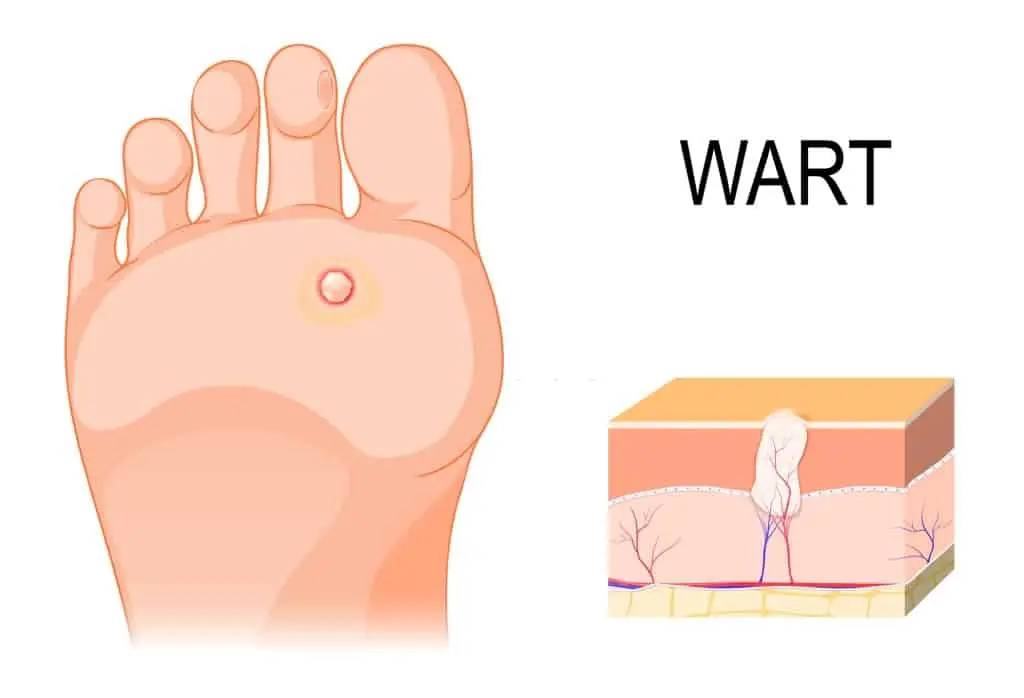If you’re one of the many who has put up with them, you no doubt want to know how to remove warts. Most warts are not a health risk or symptomatic of some dreaded disease. But who in his right mind likes having warts?
They are ugly, appear in the most inconvenient places, and can be uncomfortable and even painful. So how do you remove these hideous growths called warts? Well, first off, you need to make sure you are targeting a real wart and not some other kind of skin disorder.
A few years ago I used a popular brand name product repeatedly to get rid of what I thought was a wart. It didn’t work. It wasn’t the product’s fault. It turns out I had a skin tag, not a wart. I later found out this product wasn’t very effective in permanently removing warts anyway, but that’s another story.
Warts and skin tags are both ugly and annoying, for sure, but not the same and therefore require a different treatment.
And for the treatment to be effective, it has to target the HPV virus that causes the wart. Kill the virus, and you kill the wart. Anything less than that may give you a temporary improvement, but the wart will probably return in time.
Warts Need Not Be Harmful
Warts are small virus-induced growths that can appear anywhere on the body, even on the inside of your mouth and in the genital and rectal areas. Warts are small masses of bumpy, hardened, thickened skin. Some are softer or rougher feeling than others.
There can be a great variation in size, shape, and color, but tend to be flesh-colored, grayish or grayish-brown. They often appear on fingers, hands, elbows, and knees. Warts that appear on the face may have black seed-like dots in the center; these dots are actually dried capillaries, or tiny blood vessels.
But warts can negatively affect a person’s appearance and self-confidence. They can also cause a good deal of discomfort, itchiness, pain, and overall grief, especially plantar warts (which appear on the weight-bearing parts of feet), and genital warts (which can negatively impact sexual activity).
The question of How to Remove Warts is often accompanied by another question: “Are warts contagious?” The answer is YES!
Because warts are caused by viruses, they are contagious and can be easily spread. The viruses that cause the various kinds of warts come from the human papillomavirus (hpv) family of viruses and commonly affect children, as well as teenagers, though to a lesser degree. Adults are also affected, but not to the extent that young people are.
Like any virus, the HPV viruses can be transmitted from one part of the body to another and from person to person. People can carry these hpv viruses in their bodies for years without developing any warts. Though some people are more vulnerable to the hpv viruses and more likely to develop warts than others, basic good skin care can help make it more difficult for the viruses to enter the body and spread.
Logically, healthy skin will fight off the virus more effectively than damaged skin, as the virus finds an easier entry point through cuts or cracks in the dermis.
Some observers point out that children who bite their fingernails and constantly pick at or scratch their skin are often prone to develop warts on their fingers and hands. Certain immune system suppression medications can make one vulnerable to the wart viruses. Prolonged use of steroids can also make one more susceptible to the wart viruses.
Why bother with Warts if you don’t have to? Here are a few ideas for How to Remove Warts:
• Natural wart removal treatments – our first and preferred option because of the safety element, effectiveness, and affordability.
These treatments can range from using vinegar to chopped garlic to crushed Vitamin C tablets to essential natural oils to remove warts. Of course, some of these are more effective than others.
• Excision – dermatologist uses local anesthetic to numb area and a scalpel to cut out the wart
• Curettage – dermatologist uses a curette, or sharp-edged spoon-like instrument to scoop out the wart.
• Electrosurgery – often used together with curettage, whereby the dermatologist cuts out the wart using a curette and then cauterizes (i.e., burns) the surrounding tissue using a pen-shaped metal instrument that sends a high frequency localized electric current, ensuring the destruction of the infected area.
• Cryotherapy – dermatologist uses liquid nitrogen to freeze the wart, causing it to fall off
• Chemical treatment – dermatologist applies a caustic or acid such as lactic acid, salicylic acid, or trichloroacetic acid to break down the infected skin, causing it to peel off. Flat warts have been effectively treated with retinoic acid.
• Topical treatments – these over-the-counter treatments often use solutions containing concentrated salicylic acid to remove warts. Treatment can take several weeks.
Warts are generally harmless, but they are ugly, annoying, sometimes painful, and always contagious. Some go away on their own after a period of time. Others just make our life miserable and create a home base for spreading their virus to other parts of your body or to other people.
There are many ways to get rid of warts. You can have it done professionally, at a cost, as removal of warts is considered a cosmetic decision and not covered by most health insurance plans. Or you can learn how to remove warts naturally and safely in your own home.

